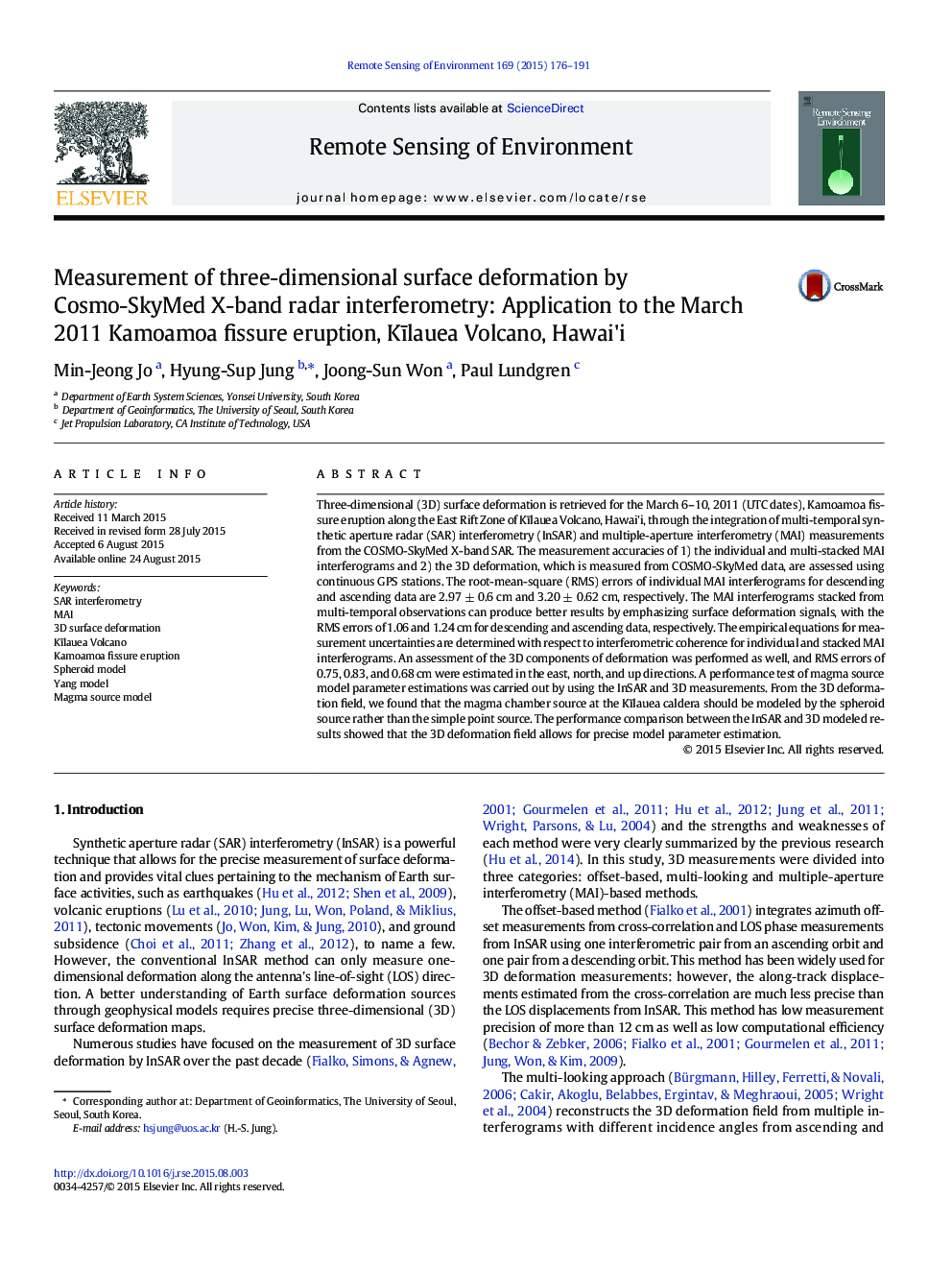| Article ID | Journal | Published Year | Pages | File Type |
|---|---|---|---|---|
| 6345810 | Remote Sensing of Environment | 2015 | 16 Pages |
Abstract
Three-dimensional (3D) surface deformation is retrieved for the March 6-10, 2011 (UTC dates), Kamoamoa fissure eruption along the East Rift Zone of Kīlauea Volcano, Hawai'i, through the integration of multi-temporal synthetic aperture radar (SAR) interferometry (InSAR) and multiple-aperture interferometry (MAI) measurements from the COSMO-SkyMed X-band SAR. The measurement accuracies of 1) the individual and multi-stacked MAI interferograms and 2) the 3D deformation, which is measured from COSMO-SkyMed data, are assessed using continuous GPS stations. The root-mean-square (RMS) errors of individual MAI interferograms for descending and ascending data are 2.97 ± 0.6 cm and 3.20 ± 0.62 cm, respectively. The MAI interferograms stacked from multi-temporal observations can produce better results by emphasizing surface deformation signals, with the RMS errors of 1.06 and 1.24 cm for descending and ascending data, respectively. The empirical equations for measurement uncertainties are determined with respect to interferometric coherence for individual and stacked MAI interferograms. An assessment of the 3D components of deformation was performed as well, and RMS errors of 0.75, 0.83, and 0.68 cm were estimated in the east, north, and up directions. A performance test of magma source model parameter estimations was carried out by using the InSAR and 3D measurements. From the 3D deformation field, we found that the magma chamber source at the Kīlauea caldera should be modeled by the spheroid source rather than the simple point source. The performance comparison between the InSAR and 3D modeled results showed that the 3D deformation field allows for precise model parameter estimation.
Keywords
Related Topics
Physical Sciences and Engineering
Earth and Planetary Sciences
Computers in Earth Sciences
Authors
Min-Jeong Jo, Hyung-Sup Jung, Joong-Sun Won, Paul Lundgren,
